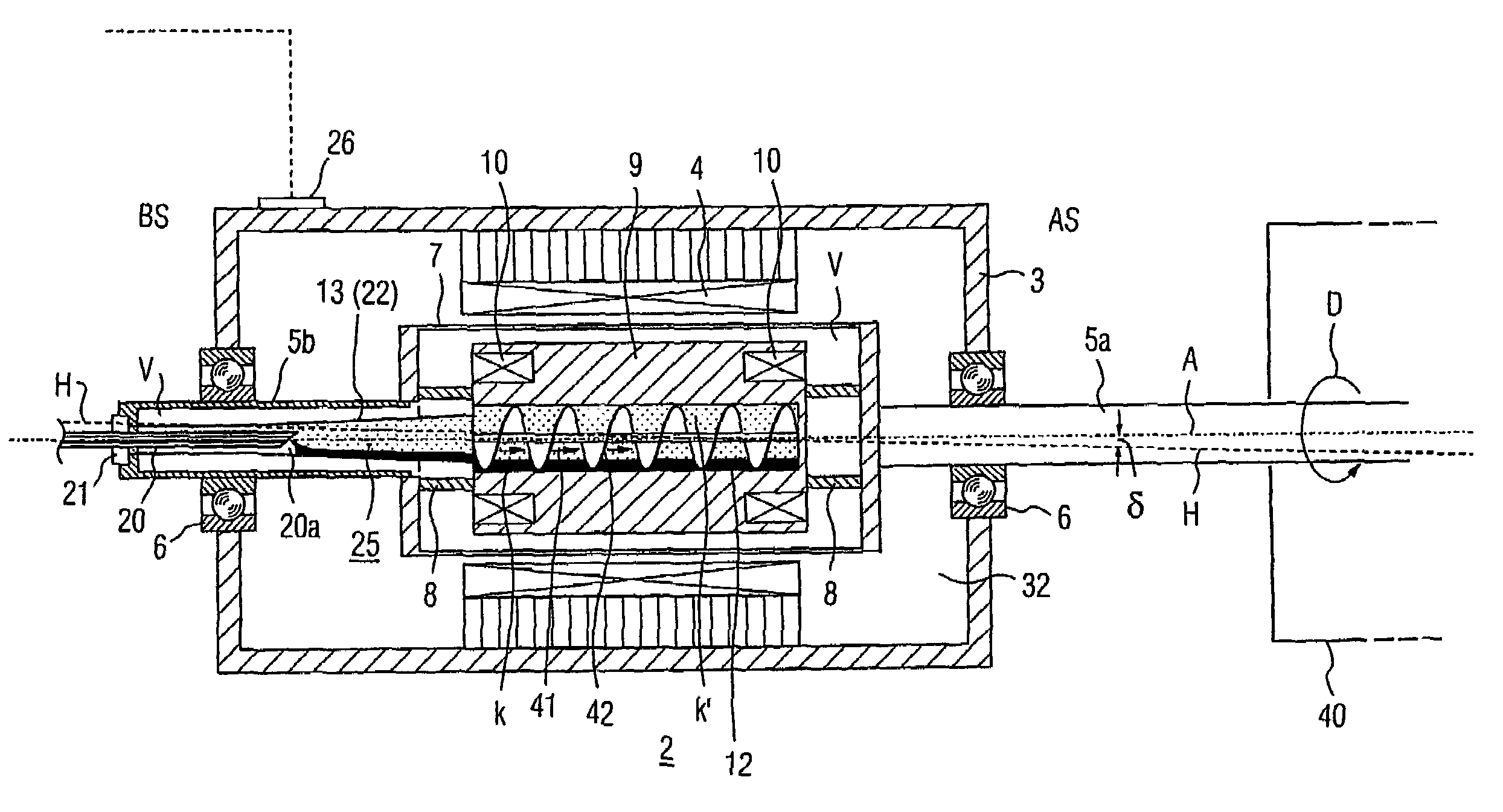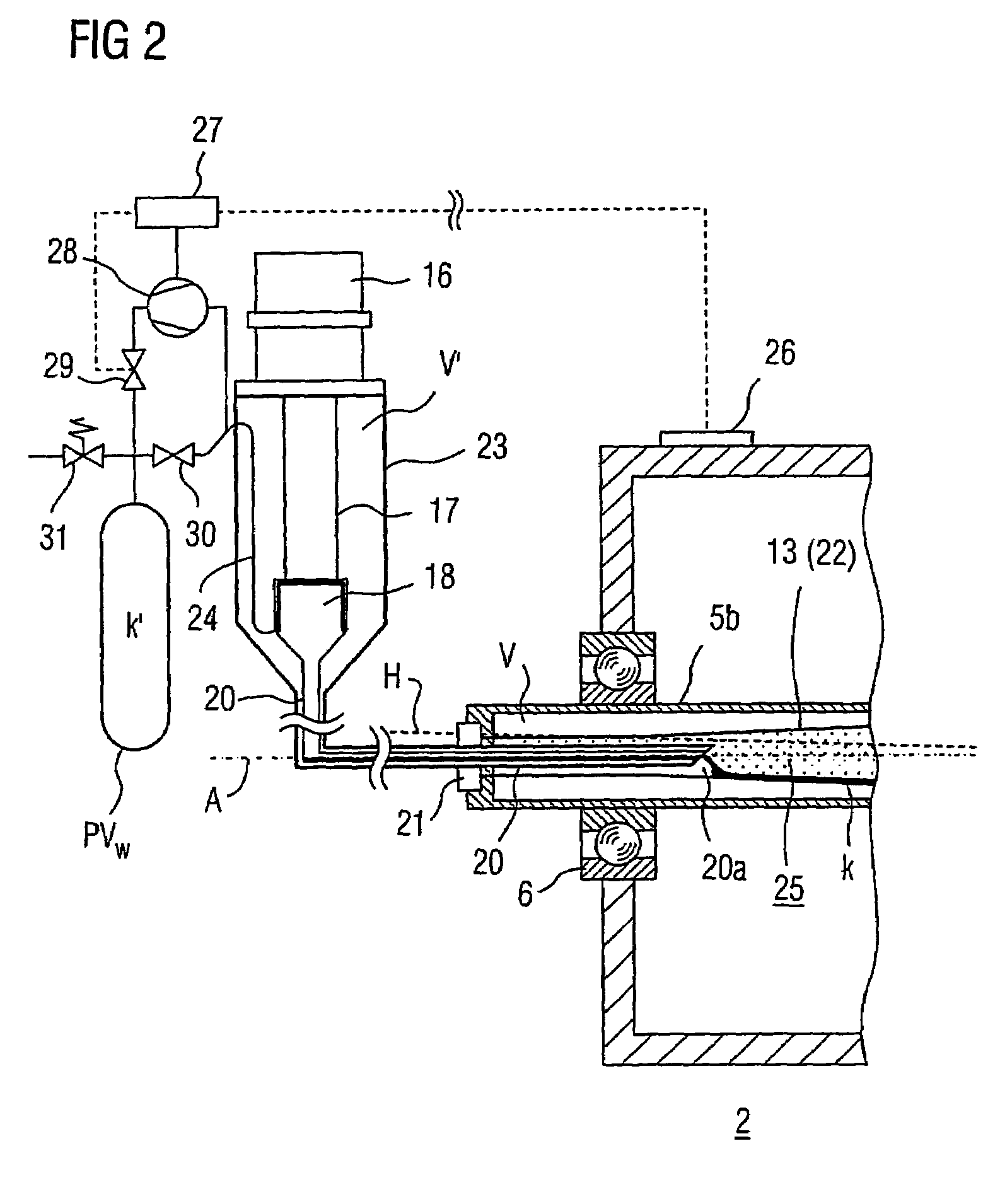Machine device having superconducting winding and thermosiphon cooling of winding
a technology of superconducting winding and winding cooling, which is applied in the direction of lighting and heating apparatus, magnetic circuit rotating parts, and shape/form/construction of magnetic circuits. it can solve the problems of affecting the operation of the machine, unable to achieve the cooling of refrigerant in the rotor cavity, and relatively low current carrying capacity of the current carrying capacitors
- Summary
- Abstract
- Description
- Claims
- Application Information
AI Technical Summary
Benefits of technology
Problems solved by technology
Method used
Image
Examples
Embodiment Construction
[0032]Reference will now be made in detail to the preferred embodiments of the present invention, examples of which are illustrated in the accompanying drawings, wherein like reference numerals refer to like elements throughout.
[0033]Machine devices according to the invention each include a machine or a motor and an associated refrigeration unit. The embodiment of this machine described below with reference to the figures may be, in particular, a synchronous motor or a generator. The machine has a rotating, superconducting winding which in principle allows for metallic LTS material (low Tc superconductor material) or oxide HTS material (high Tc superconductor material) to be used. The latter material is used as the basis for the following exemplary embodiments. The winding may include a coil or a system of coils in a two-, four or other multiple arrangement. The basic design of a corresponding synchronous motor is shown in FIG. 1, in which the embodiment of such a machine which is k...
PUM
 Login to View More
Login to View More Abstract
Description
Claims
Application Information
 Login to View More
Login to View More - R&D
- Intellectual Property
- Life Sciences
- Materials
- Tech Scout
- Unparalleled Data Quality
- Higher Quality Content
- 60% Fewer Hallucinations
Browse by: Latest US Patents, China's latest patents, Technical Efficacy Thesaurus, Application Domain, Technology Topic, Popular Technical Reports.
© 2025 PatSnap. All rights reserved.Legal|Privacy policy|Modern Slavery Act Transparency Statement|Sitemap|About US| Contact US: help@patsnap.com



